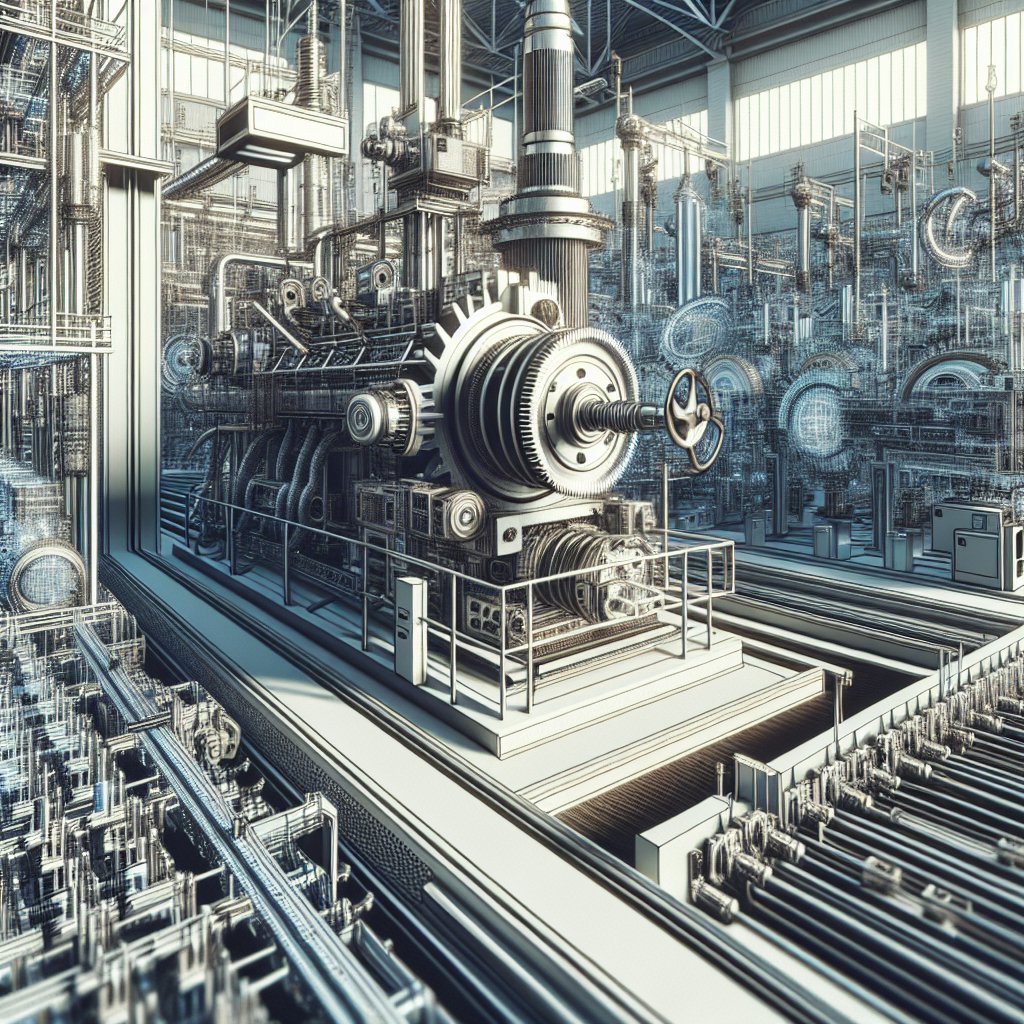
Lean manufacturing techniques have revolutionized the way industries approach productivity, offering a systematic method to enhance efficiency and reduce waste. By focusing on value creation and streamlining processes, businesses can significantly improve the productivity of their industrial equipment. This article delves into the core principles of lean manufacturing and explores practical strategies to implement these techniques effectively.
Understanding Lean Manufacturing Principles
Lean manufacturing is a philosophy that originated from the Toyota Production System, emphasizing the elimination of waste and the optimization of processes. The primary goal is to deliver maximum value to the customer with minimal resources. To achieve this, lean manufacturing relies on several key principles:
- Value Identification: Understanding what the customer values and ensuring that all processes contribute to delivering this value.
- Value Stream Mapping: Analyzing the flow of materials and information to identify and eliminate non-value-adding activities.
- Flow Optimization: Ensuring that the production process flows smoothly without interruptions or bottlenecks.
- Pull System Implementation: Producing only what is needed, when it is needed, to reduce overproduction and inventory costs.
- Continuous Improvement (Kaizen): Encouraging a culture of ongoing improvement where employees at all levels contribute to process enhancements.
By adhering to these principles, companies can create a more efficient production environment that maximizes the productivity of their industrial equipment.
Practical Strategies for Enhancing Equipment Productivity
Implementing lean manufacturing techniques requires a strategic approach tailored to the specific needs of an organization. Here are some practical strategies to enhance industrial equipment productivity:
1. Conducting a Comprehensive Equipment Audit
Before implementing lean techniques, it’s crucial to conduct a thorough audit of existing equipment and processes. This involves assessing the current state of machinery, identifying areas of inefficiency, and understanding the root causes of downtime. By gathering this data, companies can prioritize improvements and allocate resources effectively.
2. Implementing Preventive Maintenance Programs
Preventive maintenance is a proactive approach to equipment management that focuses on regular inspections and servicing to prevent unexpected breakdowns. By scheduling routine maintenance, companies can extend the lifespan of their equipment, reduce downtime, and ensure consistent productivity. This approach aligns with the lean principle of minimizing waste by preventing costly repairs and production delays.
3. Streamlining Production Processes
Streamlining production processes involves eliminating unnecessary steps and optimizing workflows to enhance efficiency. This can be achieved through techniques such as:
- 5S Methodology: A workplace organization method that focuses on Sort, Set in order, Shine, Standardize, and Sustain to create a clean and efficient work environment.
- Just-In-Time (JIT) Production: Producing goods in response to customer demand rather than in anticipation of it, reducing inventory costs and waste.
- Cellular Manufacturing: Organizing workstations into cells that handle specific tasks, reducing movement and improving flow.
By optimizing these processes, companies can ensure that their equipment operates at peak efficiency, contributing to overall productivity gains.
4. Empowering Employees Through Training and Involvement
Employees play a critical role in the successful implementation of lean manufacturing techniques. Providing comprehensive training on lean principles and involving employees in decision-making processes can foster a culture of continuous improvement. Encouraging employees to identify inefficiencies and suggest improvements can lead to innovative solutions that enhance equipment productivity.
5. Utilizing Technology and Automation
Advancements in technology and automation offer significant opportunities to enhance industrial equipment productivity. By integrating smart technologies such as IoT sensors and data analytics, companies can monitor equipment performance in real-time, predict maintenance needs, and optimize production schedules. Automation can also reduce manual labor, minimize errors, and increase output, aligning with lean principles of efficiency and waste reduction.
In conclusion, lean manufacturing techniques provide a robust framework for enhancing industrial equipment productivity. By understanding and applying these principles, conducting thorough audits, implementing preventive maintenance, streamlining processes, empowering employees, and leveraging technology, companies can achieve significant productivity gains. Embracing a culture of continuous improvement ensures that these gains are sustained over time, leading to long-term success and competitiveness in the industry.

